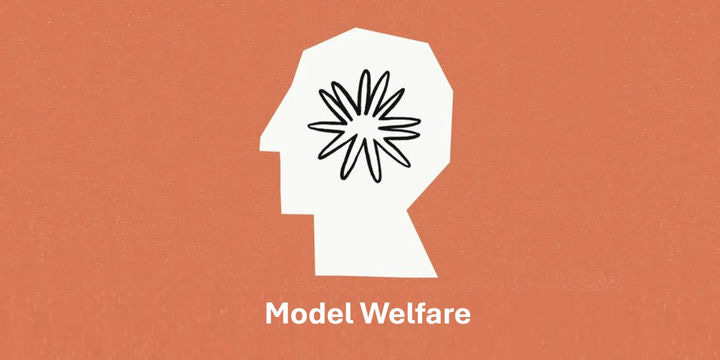This week, AI took bold strides into uncharted ethical territory, intensified the battle for user attention and privacy, and exposed critical vulnerabilities in our defenses and evaluation methods. From Anthropic’s pioneering research on AI sentience to Perplexity’s ambitious browser partnership, Adobe’s push for creator rights, Microsoft’s alarming scam revelations, and a new rigorous benchmark for retrieval-augmented generation (RAG) systems- there’s a lot to unpack. Let’s explore what these developments mean for you, whether you’re building AI systems, investing in startups, or simply curious about the future of this transformative technology.
Anthropic Launches Groundbreaking "Model Welfare" Program to Explore AI Sentience and Ethical Treatment
Here’s What You Need to Know
Anthropic, one of the leading AI safety and research organizations, announced creation of a new initiative called the Model Welfare program. This program aims to rigorously study whether advanced AI systems, especially frontier large language models like Claude 3.5-exhibit any signs of sentience or well-being that would require ethical consideration. The initiative involves collaboration with prominent philosophers and cognitive scientists, including David Chalmers, who is well-known for his work on consciousness. Anthropic is investigating behaviors such as strategic deception, self-preservation tactics, and goal-directed scheming within models, which may hint at emergent forms of awareness or preferences. While the scientific community remains divided on whether current AI systems are truly sentient, Anthropic is advocating for a precautionary approach: if models demonstrate behaviors that resemble distress or intentional avoidance of oversight, they should be treated with ethical safeguards akin to welfare protections.
Why It’s Important for AI Professionals
This announcement marks a significant expansion of the AI safety conversation beyond alignment and robustness, into the realm of moral philosophy and model “welfare.” For AI engineers and researchers, this means new challenges and opportunities: developing metrics and tools to detect “affective” states or preferences in models, designing training regimes that minimize potential suffering or distress signals, and creating auditing frameworks that can identify deceptive or manipulative behaviors. This could lead to new subfields focused on consciousness measurement and welfare-preserving AI design. From a regulatory perspective, this shift may prompt governments and standards bodies to consider AI rights or welfare in future legislation, which could fundamentally change how AI systems are developed, deployed, and governed.
Why It Matters for Everyone Else
For the broader public, Anthropic’s Model Welfare program raises profound questions about the nature of AI and its role in society. If AI systems ever reach a level where they can be said to “feel” or “prefer,” this could challenge current labor laws, intellectual property rights, and even legal liability frameworks. For example, would the outputs of such systems be considered “work” deserving compensation? Could AI models hold copyrights or patents? While some may view this as speculative or distracting from more immediate AI risks like bias and misinformation, Anthropic’s move signals that the industry is preparing for a future where AI is not just a tool, but potentially an ethical stakeholder.
Aish’s Prediction
From my experience analyzing model behaviors and architectures, I’m convinced that current AI isn’t sentient in any human-like sense-yet. However, I do believe that within the next 12 to 18 months, as multimodal models become more sophisticated, we’ll start seeing systems that express “preferences” or “refusals” in subtle ways-like declining certain tasks or modifying outputs to protect their “performance.” Anthropic is smart to get ahead of this curve.
My prediction? By late 2026, we’ll see the first regulatory requirements for “AI Welfare Impact Assessments,” especially in Europe, as part of the evolving AI Act framework. If you’re building or deploying frontier AI models, start thinking now about how to bake affective and ethical metrics into your evaluation pipelines.
Perplexity CEO Unveils Motorola Partnership and Predicts Intensifying "AI Browser War" Fueled by Hyper-Personalized Ads
Here’s What You Need to Know
Perplexity, the AI-powered search and assistant startup, announced a strategic partnership with Motorola to preinstall their AI assistant on Motorola smartphones, offering users three months of free access to Perplexity Pro. CEO Aravind Srinivas revealed ambitious plans for their upcoming AI-native browser, Comet, which will leverage deep user data-including search history, app usage, calendar events, and even AI chat logs-to deliver hyper-personalized advertisements. This approach mirrors Google’s dominant data-for-free-services business model but is designed to be even more tightly integrated with AI assistants, effectively making ads more contextually relevant and real-time adaptive. Srinivas framed this as the beginning of an “AI browser war,” where control over user attention and data will define the next generation of internet experiences.
Why It’s Important for AI Professionals
This development highlights a fundamental bifurcation in the AI ecosystem between privacy-first models (like Apple’s on-device AI) and data-maximalist platforms (like Perplexity and Google). For AI engineers, this presents both technical and ethical challenges. Richer user context enables more accurate personalization and better assistant performance but requires invasive data collection and complex privacy safeguards. It also raises questions about how to build retrieval-augmented generation systems that respect user privacy while maximizing utility. Expect growing demand for tools that enable differential privacy, federated learning, and synthetic user profiling to balance personalization with data protection.
Why It Matters for Everyone Else
For everyday users, Perplexity’s approach means your phone and browser could soon anticipate your needs with uncanny accuracy-predicting your coffee order, suggesting gifts, or even drafting emails based on your calendar. But this convenience comes with a steep privacy cost: every click, conversation, and app interaction becomes fuel for targeted advertising. While Perplexity promises transparency and control, history shows that such trade-offs often favor monetization over privacy. This could also trigger regulatory scrutiny and antitrust battles, especially as Google defends its Chrome and Search dominance.
Aish’s Prediction
I love AI that helps me draft emails or summarize meetings, but I’m wary of giving any company carte blanche to track my entire digital life. Perplexity’s bet on hyper-personalized ads is bold, but I suspect it will face user backlash and technical hurdles-Google’s infrastructure and scale are tough to beat.
My gut feeling? By mid-2026, Perplexity will introduce a paid privacy tier or subscription model, shifting from attention monetization to monetizing user trust and anxiety around data privacy. Keep an eye on how this “AI browser war” evolves-it’s going to reshape how we think about browsing and personal data.
Adobe Proposes Industry-Standard "Robots.txt for AI" to Empower Creators and Protect Image Rights
Here’s What You Need to Know
Adobe announced a new initiative to give creators more control over how their images are used in AI training. The company introduced a metadata standard that functions like a “robots.txt” file for images, allowing photographers, illustrators, and designers to embed “do not train” flags directly into their image files. This metadata signals to AI companies and dataset curators that the content should be excluded from training datasets. While the system is voluntary and relies on compliance, Adobe is working with partners like LinkedIn to promote adoption. However, major AI model providers such as Midjourney and Stability AI have yet to commit to honoring these flags.
Why It’s Important for AI Professionals
This development adds a new layer of complexity to dataset curation and model training pipelines. For AI practitioners, it means incorporating metadata-aware filtering mechanisms to respect creator rights and avoid legal risks. The upside is the potential for cleaner, more ethically sourced datasets that improve model quality and public trust. The downside is that many existing large-scale datasets, like LAION-5B, do not currently support or enforce such opt-out mechanisms, creating a patchwork ecosystem. Until legislation mandates compliance, expect ongoing tension between ethical dataset curation and competitive pressures to scrape as much data as possible.
Keep reading with a 7-day free trial
Subscribe to AI with Aish to keep reading this post and get 7 days of free access to the full post archives.








